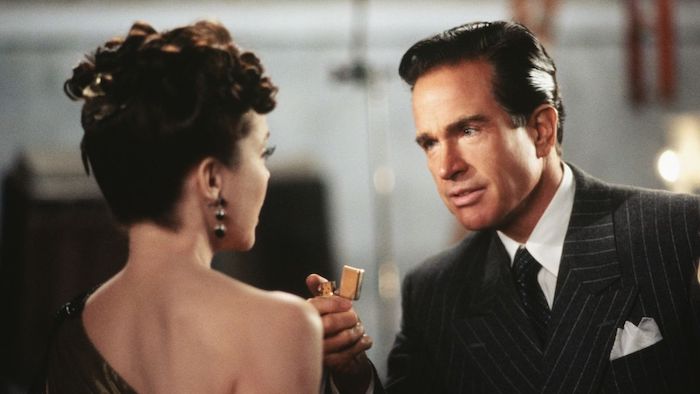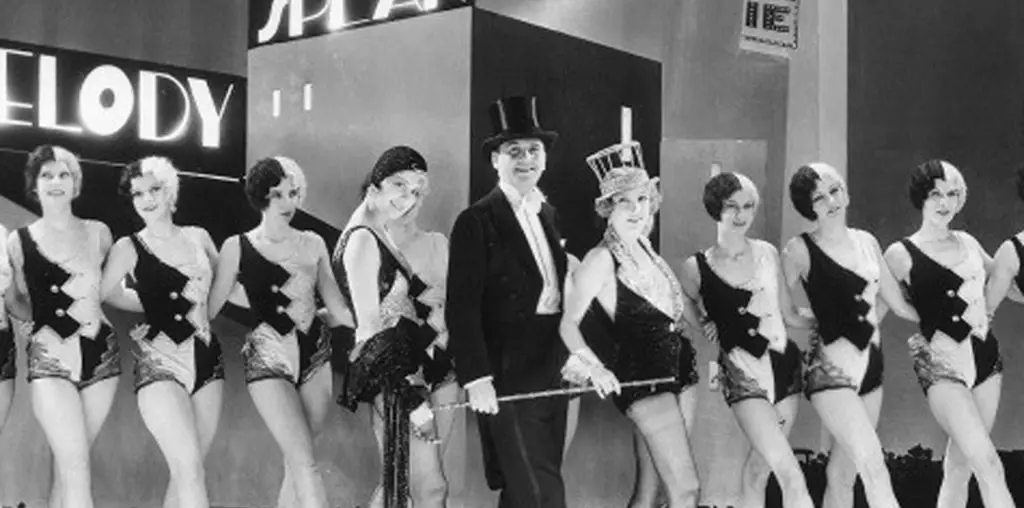
Many great projects have been highlighted here as a Certified Film Threat in Progress and here is a follow up to one story. You may remember Dan Mirvish’s crowdfunding campaign for his new film Between Us. The campaign ended successfully on December 16 and he raised $14K of his $10K goal. Dan has some great insight into what made the campaign a success and what he would change if he could.
Before choosing to go with Kickstarter, he spent some time talking to other filmmakers who had run campaigns both on Kickstarter and on Indiegogo. Ultimately, he was impressed by the amount of publicity the all or nothing platform is getting, most notably from Time Magazine where they were named one of the 50 Best Inventions of 2010. He thought that more people outside of the independent film community might be familiar with Kickstarter as opposed to Indiegogo and that might help with getting financial backing from investors too.
The campaign lasted only 30 days. It seemed just long enough to raise the money he needed without completely nagging all of his supporters. One thing he does regret is not having a pitch video at the start. Dan and I spoke often during the run of the campaign and I urged him to get a video up. “Thirty days is not a lot of time if you only think to post a video in the second week. We really only had two weeks where we had a strong video up, I wanted to do a video, but didn’t get it up until we were already into the campaign. I don’t know if it ultimately it would have made a huge difference early on, but it did make a difference in the latter part,“ Dan said.
He gave some thought into what the video should show. “It was a real challenge in making the video because it wasn’t a film we had any footage of, there wasn’t a short film it was based on, and I don’t act very well on camera or come across sincerely because most of my other projects have been very wacky and this is a departure from that. It is really important that the pitch video is compatible with the tone of the film. For me, I had to make a video where you hear my voice, but you don’t see me talking. There were still pictures of me, much more sincere (laughs). So it had to be creative and show my talents at filmmaking. If you are selling yourself as a filmmaker and the first thing people see is this Kickstarter video, that video had better be good. I looked at a lot of videos before I made mine and I thought ‘oh my god if I have to look at one more pasty faced filmmaker asking for money, I’m going to throw up!’ Some are done well, but a lot are not and I was thinking ‘wait, this is a filmmaker and he can’t even shoot a good promo video?’ A good piece of advice, that I did not do and struggled with, is try to come up with the video BEFORE you start the campaign.”
As with any crowdfunding campaign, there is a learning curve on how to harness the power of word of mouth. Dan said the Film Threat pieces definitely helped as donations spiked right after they ran. “I also had to learn about the best ways to use social networks for this. For the first couple of weeks, there were only a few hundred people who knew about the campaign before I started getting more effective in getting the word out to a much broader list. The way I discovered to do that on Facebook is to set it up as an event, invite my friends to the ‘event,’ and then it is possible to send updates to everyone invited, even if they don’t initially respond. As far as I can tell, that is the only way to get the word out to everyone on your Facebook friend list. You can only inbox message 20 people at a time. You can post something on your wall, but only a few people will see it at that moment before it gets lost in the feed and I think there is an algorithm that only allows a few hundred of your friends to see that post unless they RSS your wall. We set up a group page, but there were only 250 people on that, a fairly limited audience. There was only so much I could do and then I had to rely on friends to post things to their wall and invite people to the event. Ultimately, I think some of my biggest contributors came from others posting about the campaign. Those donors were friends of friends.”
The $25 level proved to be the most popular and Dan thinks it was because of the perk offered at that level. “I offered an IMDB credit at the $25 level. Even starving artist friends of mine, and most of them are, can put in $25. For those in the industry, having an imdb credit, even a thank you, is valuable. When people check your IMDB credits, if you are up for a job or getting ready to work on a project, the first thing one sees is the years and then the movie and then the job. You need to look like you have activity in your profession and getting that credit for 2010 looks like you are active even if you haven’t done something this year. It bridges gaps for some people. And if the film is successful, it would be great to be associated with it. Who wouldn’t want to have a credit on a film that was successful? It looks even fancier to be thanked on that film.” Also, there is little effort in doing this. No merchandise to manufacture and ship (not to mention the costs associated with it!). IMDB allows thank yous to be given to anyone with an account.
As this is not Dan’s first time in the directing chair, he was pretty shrewd about what he wanted to accomplish with the campaign. He is not relying solely on crowdfunding to fund his film and he thinks that also made the campaign stand out. “The Kickstarter campaign wasn’t just about the money, it was about the momentum. This is a project we are going to shoot in March. We had already raised, before the start of the campaign, about $25K in private investment and we are offering product placement spots as well (he has accomplished this successfully on past films). I do have this nice business plan pdf explaining how people can invest in the film, donate to the film through our fiscal sponsor Filmmakers Alliance which is tax deductible, or through product integration. What I wanted to do with the campaign was get the word out to a broader audience because there are SEC regulations about sending out prospectuses and business plans to those you don’t know, you have to be careful of that. It brought people in to see the pdf plan on our site. The real goal of the campaign was to use it like a Trojan horse, to get the word out there and get people to look at the business plan. Even though Kickstarter says we raised $14K, we really raised more than that. One person put in $2500 on Kickstarter and now is going to put in another $2500 to get a $5000 unit in the film. Another person saw the campaign, did not donate, but is going to buy shares in the project. By having a video and a campaign that showed potential investors what we had to offer, what our skills are and it looks like there is audience interest, it gave them incentive to look into investing. That is the success of the campaign, not just in the individual amounts we raised, but leveraging that into much bigger investments.”
Some filmmakers ask about the timing for launching a campaign. Dan says he took a calculated risk when he launched in mid November. “I had to decide whether to start raising money now, a few months from needing it? Or should I wait until right before we go into production? One of the challenges with the campaign was the reason for raising money was very vague, as opposed to those who are asking for very specific amounts to do a very specific thing. There was not a specific reason given for wanting this amount of money. The amount was really dictated by what I thought could be raised. The real goal was getting people to check out the film’s business plan. I knew that I wanted the campaign to be finished about the time that other filmmakers would start hearing about being accepted to the major festivals [Sundance, Slamdance and Berlin] and many of them would be using Kickstarter to raise funds to travel to the festivals. I wanted to be out before that rush hit. The campaign finished right before the holidays so if it went on for another week or two, a lot of people would have gone on vacation and the donations would not be strong.”
“I also knew this campaign would coincide with when we would start our casting in earnest and it dovetailed nicely. During the campaign, we got our first cast commitment from an actress who had the lead in two Oscar winning films. On the next to the last day of the campaign, I had lunch with another prospective cast member who had just been nominated for a Golden Globe and I was able to use these things during the campaign to get people to realize that the project was moving and getting some great interest from A list cast. If people contributed money, I would send an update to them to say who the prospective cast are.”
Dan also brought up a little known fact regarding the continuation of fundraising after the official campaign finishes on Kickstarter. “About 2 minutes before the end of the deadline, I edited the text proposal on my Kickstarter page and told people that if they missed the deadline, there are still ways you can contribute financially. After the campaign ends, you can’t edit the page anymore even though the page stays up. Don’t change this too early before the deadline because you still want people to use the account until it closes, but for those who say ‘oh, I just found out about the campaign and missed the deadline,’ you give them a way to still contribute.”
I asked if he would recommend crowdfunding to other filmmakers or if he would ever do it again himself. “In the end, as with anything in indie film, it is only worth doing it if you are having fun. This was fun. I think I only pissed off one person on Facebook who unfriended me and one person complained they were getting too many updates,” he laughed. As a person who offered him advice on the campaign and who watched as it played out, I was impressed with how aggressively he promoted the effort. After all, this is a man who paraded up and down Sunset Boulevard wearing a sandwich board to promote the theatrical release of his past films. He is pretty shameless, but he does have a large network of people who helped spread his message. This was key to his success. I look forward to hearing more about Between Us as it goes into production. If you would like more information on the film, please visit the film’s website.


